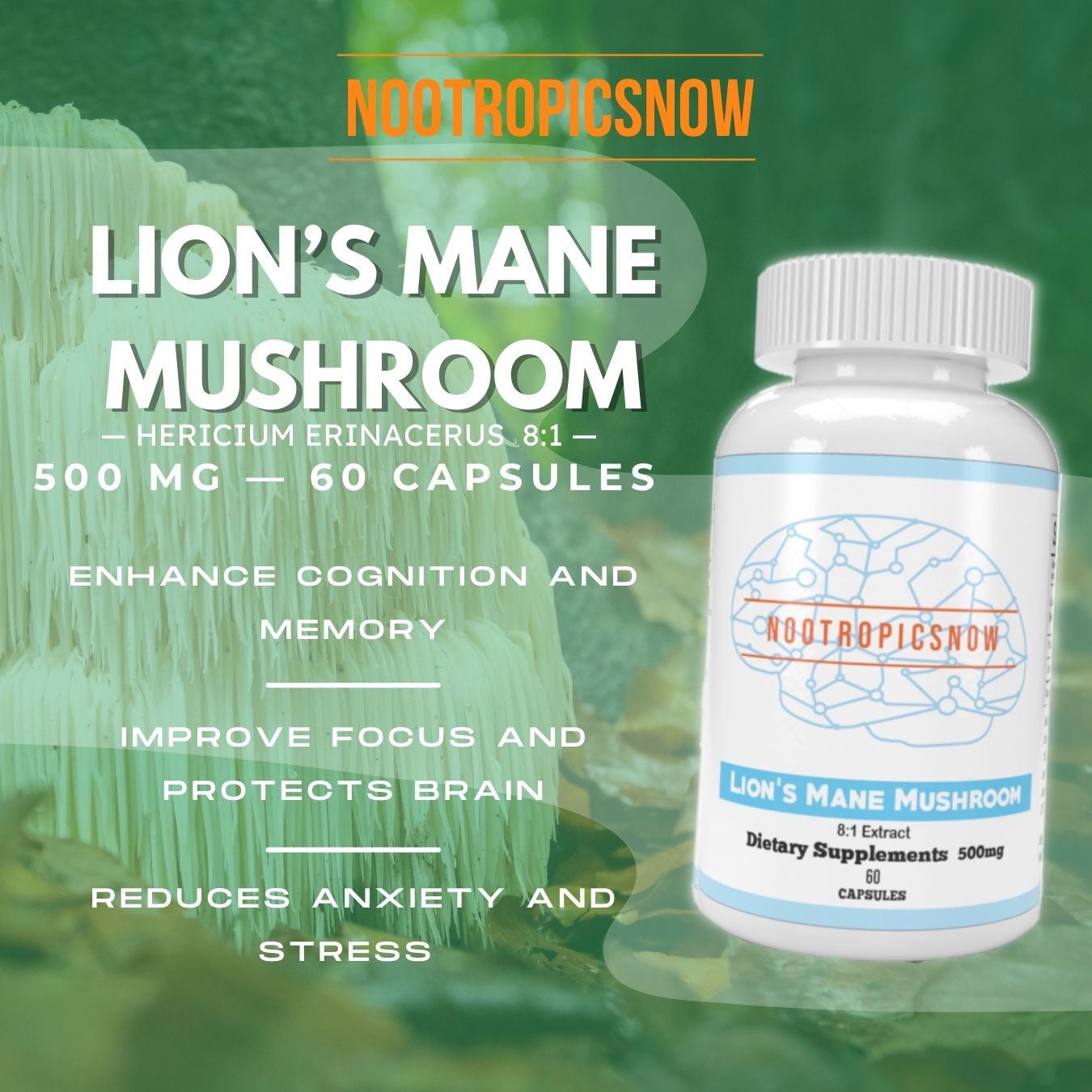Chaga: Benefits, Uses & Side Effects

`markdown
Chaga: The King of Medicinal Mushrooms

Chaga, scientifically known as Inonotus obliquus, is a fascinating fungus renowned for its potential health benefits. It thrives in cold climates, primarily parasitizing birch trees. Due to its immense antioxidant properties and various medicinal applications, chaga has earned the title of “King of Medicinal Mushrooms.” Therefore, let’s delve into a comprehensive examination of chaga, exploring its benefits, uses, and how to incorporate it into your wellness routine.
What is Chaga?
Chaga is not a mushroom in the traditional sense. Instead, it is a sclerotium, a hardened mass of mycelium, typically found on birch trees in colder regions. These regions include Siberia, Canada, Scandinavia, and parts of the United States. In fact, the term “chaga” itself originates from the Russian word for this unique fungus.
Distinguishing Features
Visually, chaga resembles a burnt charcoal clump protruding from the tree’s bark. Furthermore, its exterior is hard, black, and deeply cracked, while its interior exhibits a vibrant rusty-brown color. Due to these characteristics, identifying chaga in the wild is relatively straightforward. However, caution is essential, as other growths can mimic its appearance.
Composition and Bioactive Compounds
Chaga is brimming with bioactive compounds that contribute to its purported health benefits. These compounds include:
Health Benefits of Chaga
Chaga’s reputation as a medicinal mushroom stems from its impressive array of potential health benefits. Scientific studies, while still emerging, support many traditional uses of this fungus.
1. Immune System Support
One of the most well-known benefits of chaga is its ability to bolster the immune system. The polysaccharides in chaga, particularly beta-glucans, stimulate the production of white blood cells. In turn, these white blood cells are crucial for fighting off infections and maintaining overall immune function. Consequently, regular chaga consumption might enhance the body’s natural defenses against various pathogens.
2. Powerful Antioxidant Properties
Chaga boasts an incredibly high Oxygen Radical Absorbance Capacity (ORAC) score. This score indicates its potent antioxidant activity. Antioxidants neutralize free radicals. Free radicals are unstable molecules that can damage cells and contribute to aging and chronic diseases. Therefore, by neutralizing these free radicals, chaga may help protect against oxidative stress.
3. Anti-Inflammatory Effects
Chronic inflammation is linked to numerous health problems. Chaga exhibits anti-inflammatory properties that can help reduce inflammation throughout the body. Studies suggest that chaga can suppress inflammatory cytokines, thereby mitigating inflammatory responses. Consequently, this could be beneficial for managing conditions like arthritis and inflammatory bowel disease.
4. Potential Anti-Cancer Properties
Several studies have investigated chaga’s potential anti-cancer effects. The triterpenoids, particularly betulinic acid, found in chaga have demonstrated the ability to inhibit cancer cell growth in test-tube studies. In addition, some animal studies suggest that chaga may help shrink tumors and prevent cancer metastasis.
5. Blood Sugar Regulation
Research indicates that chaga may help regulate blood sugar levels. Certain compounds in chaga have been shown to inhibit alpha-glucosidase, an enzyme involved in breaking down carbohydrates. By inhibiting this enzyme, chaga may slow down the absorption of sugar into the bloodstream. Consequently, this could be beneficial for managing diabetes and improving insulin sensitivity.
6. Cholesterol Management
Some studies suggest that chaga may help lower cholesterol levels. Specifically, it may reduce LDL (bad) cholesterol while increasing HDL (good) cholesterol. This improvement in cholesterol profile can contribute to a healthier cardiovascular system.
7. Gut Health Support
Preliminary research suggests that chaga may positively impact gut health. By reducing inflammation in the gut and promoting the growth of beneficial bacteria, chaga can improve digestive function. A healthy gut microbiome is essential for overall health and well-being.
8. Skin Health
Chaga’s antioxidant and anti-inflammatory properties can also benefit skin health. It may help protect the skin from damage caused by UV radiation and environmental pollutants. Moreover, chaga may reduce skin inflammation and promote wound healing.
How to Consume Chaga
There are several ways to incorporate chaga into your diet and wellness routine.
1. Chaga Tea
The most common way to consume chaga is as a tea. To make chaga tea:
2. Chaga Powder
Chaga powder is a convenient way to add chaga to smoothies, coffee, or other beverages. Simply mix a teaspoon of chaga powder into your favorite drink. Make sure the powder is extracted using hot water to release active compounds.
3. Chaga Capsules
Chaga capsules provide a standardized dose of chaga extract. This can be helpful for those who want a consistent and convenient way to consume chaga.
`markdown

View Product
`
4. Chaga Extracts
Liquid chaga extracts are another option for easy consumption. These extracts can be added to water, juice, or other beverages.
Safety and Side Effects
While chaga is generally considered safe, there are some potential side effects and precautions to be aware of.
Where to Buy Chaga
Chaga can be purchased from various sources, including:
Sustainable Harvesting of Chaga
If you choose to harvest chaga in the wild, it is crucial to do so sustainably to ensure the long-term health of the forest ecosystem.
Chaga in the 21st Century
Chaga continues to attract attention and research. As the demand increases, focus remains on sustainability. Cultivating chaga on a commercial scale could alleviate the strain on natural birch forests. Simultaneously, ongoing studies investigate additional health applications. Chaga has cemented its place in holistic health. Furthermore, it holds potential to complement conventional medical treatment.
Chaga vs Other Medicinal Mushrooms
While chaga boasts several purported health benefits, it’s useful to understand how it compares to other popular medicinal mushrooms:
Each mushroom offers different strengths. Therefore, one’s choice depends on specific health needs. Also, some prefer to combine different mushrooms in blends to enjoy a wide range of benefits.
`markdown

View Product
`
Concluding Thoughts
Chaga is a remarkable fungus with a long history of traditional use and a growing body of scientific evidence supporting its potential health benefits. From boosting the immune system to fighting inflammation and potentially preventing cancer, chaga offers a wide array of therapeutic properties. By incorporating chaga into your diet and wellness routine, you may experience the transformative power of this “King of Medicinal Mushrooms.” Remember to consult with a healthcare professional before using chaga, especially if you have any underlying health conditions or are taking any medications. Furthermore, practice responsible and sustainable harvesting methods to protect the environment for future generations.
`
`markdown
Chaga: Nature’s Potent Healer from the Birch Tree
Chaga mushroom, scientifically known as Inonotus obliquus, represents a fascinating and powerful natural remedy. This unique fungus, primarily found growing on birch trees in colder climates, has been revered for centuries in traditional medicine. Renowned for its impressive antioxidant profile and potential health benefits, Chaga is gaining significant attention in the modern wellness community.
Understanding Chaga Mushroom
Unlike typical mushrooms with a distinct cap and stem, Chaga is a sclerotium, a hardened mass of mycelium. This dense, black formation resembles burnt charcoal and protrudes from the host tree. While its appearance may seem unassuming, Chaga’s interior reveals a vibrant orange-brown core, packed with beneficial compounds.
Habitat and Growth
Chaga thrives in cold environments, specifically in the Northern Hemisphere. Its primary host is the birch tree, although it can occasionally be found on other hardwoods like alder and beech. This fungus establishes itself through wounds or damaged areas on the tree’s bark. Once established, it grows slowly, drawing nutrients from the tree for several years.
Distinguishing Chaga from Look-Alikes
Identifying true Chaga is crucial, as other fungal growths can be mistaken for it. The key identifiers include its hard, charcoal-like exterior, the orange-brown interior, and its exclusive growth on birch trees, with a strong preference for older birch trees over 40 years of age.. Consulting with an experienced forager is advisable for those unfamiliar with identifying Chaga.
The Potent Nutritional Profile of Chaga
Chaga’s reputation stems from its exceptional nutritional composition, featuring a diverse array of bioactive compounds that contribute to its potential health benefits.
Key Bioactive Compounds
Vitamins and Minerals
Beyond these key compounds, Chaga also contains essential vitamins and minerals, including:
The Health Benefits of Chaga: A Deeper Dive
The diverse nutrient profile of Chaga translates into a wide range of potential health benefits, making it a subject of ongoing research and growing interest.
Immune System Modulation
Chaga is perhaps best known for its ability to support and regulate the immune system. Polysaccharides found in Chaga stimulate the production of immune cells, such as macrophages and natural killer cells, enhancing the body’s ability to fight off infections and foreign invaders. Cytokines produced by Chaga further aid the immune system in fighting off harmful bacteria and viruses.
Anti-Inflammatory Properties
Chronic inflammation is a root cause of many modern diseases. Chaga possesses potent anti-inflammatory properties, thanks to compounds like betulinic acid and triterpenoids. These compounds can help reduce inflammation throughout the body, alleviating symptoms associated with conditions like arthritis, inflammatory bowel disease, and cardiovascular disease. Therefore, Chaga may be a valuable addition to maintaining long-term health.
View Product-mood-anxiety-stress-mental-health-i.202321183.17830742615)
Potential Anti-Cancer Effects
Research suggests that Chaga may have significant anti-cancer potential. Studies have demonstrated that betulinic acid can induce apoptosis (programmed cell death) in cancer cells. Chaga’s antioxidant content can also protect cells from DNA damage, reducing the risk of cancer development. These anticancer effects are mostly due to its triterpenes content which have been shown to help kill cancer cells.
Blood Sugar Regulation
Studies indicate that Chaga may help regulate blood sugar levels, making it a potentially beneficial supplement for individuals with diabetes or insulin resistance. Compounds in Chaga can improve insulin sensitivity and reduce glucose absorption in the gut. It can also help manage blood sugar levels by inhibiting alpha-glucosidase.
Antioxidant Powerhouse
Chaga boasts an exceptionally high ORAC (Oxygen Radical Absorbance Capacity) score, which measures its antioxidant capacity. Antioxidants neutralize free radicals, unstable molecules that can damage cells and contribute to aging and disease. By combating oxidative stress, Chaga can protect against chronic diseases and promote overall health.
Digestive Health Support
Emerging research suggests that Chaga may positively impact digestive health by reducing inflammation in the gut and promoting the growth of beneficial gut bacteria. A healthy gut microbiome is crucial for nutrient absorption, immune function, and overall well-being. However, more research is needed to fully understand Chaga’s effects on digestive health.
Integrating Chaga into Your Wellness Routine
There are several ways to incorporate Chaga into your daily routine, allowing you to experience its potential health benefits.
Chaga Tea
Brewing Chaga tea is a popular method. This involves simmering Chaga chunks or powder in hot water for an extended period to extract the beneficial compounds. The tea has an earthy, slightly bitter flavor that can be enhanced with honey or other natural sweeteners.
Preparation:
Chaga Supplements
Chaga supplements are available in capsule, powder, and extract forms, offering a convenient way to consume a concentrated dose of its beneficial compounds. When choosing a supplement, opt for reputable brands that use high-quality Chaga extracts and undergo third-party testing for purity and potency.
Precautions and Considerations
Before incorporating Chaga into your routine, consider the following precautions:
The Future of Chaga Research
While the existing research on Chaga is promising, more human studies are needed to fully understand its efficacy and potential applications. Ongoing research is exploring Chaga’s role in cancer treatment, immune modulation, and other areas of health. As research progresses, Chaga may emerge as a valuable tool for promoting wellness and preventing disease.
Ethical Harvesting and Sustainability
As Chaga’s popularity grows, ensuring its sustainable harvesting is critical to protect birch forests and maintain the long-term availability of this valuable resource. Sustainable harvesting practices involve carefully selecting mature Chaga growths, leaving a portion intact to allow for regrowth, and avoiding damage to the host tree. By supporting ethically sourced Chaga, consumers can contribute to the responsible management of this natural treasure. It is important to note that overharvesting is still a danger in certain regions.
Conclusion
Chaga mushroom, with its unique appearance and potent health benefits, offers a compelling example of nature’s healing power. From its immune-modulating properties to its antioxidant capacity and potential anti-cancer effects, Chaga holds significant promise for promoting wellness and preventing disease. By integrating this remarkable fungus into a healthy lifestyle, individuals can harness its potential to support their overall health and well-being.
`




